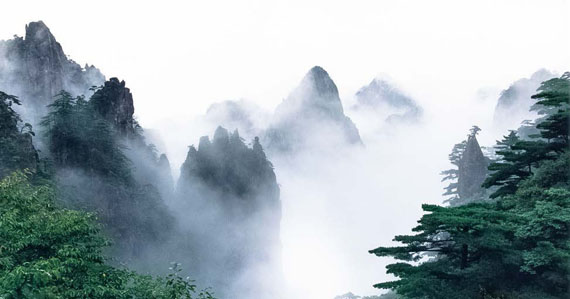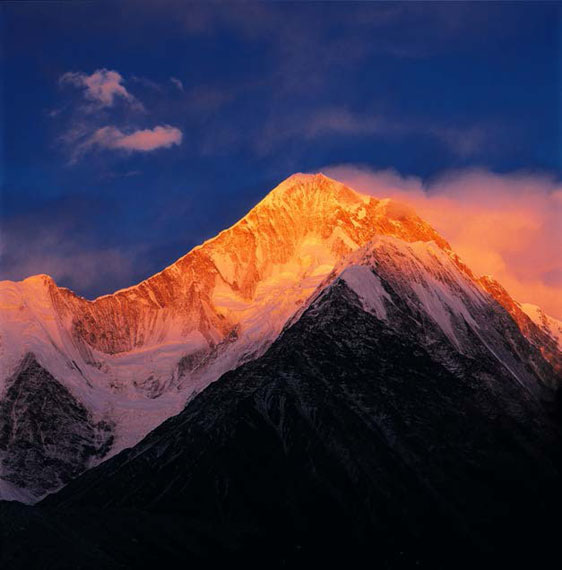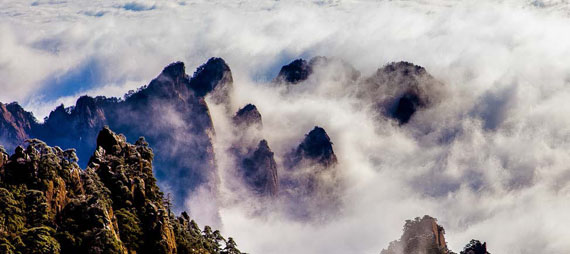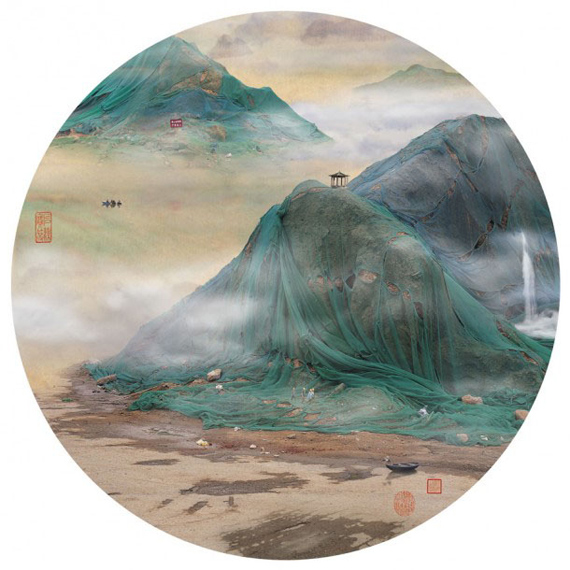
Art of the Mountain - Through the Chinese Photographer's Lens
three sections with 80 photographs by 26 contemporary photographers
Zhang Anlu » YAN Changjiang » Xiao Chao » Zheng Congli » Li Daguang » Zeng Han » LU Hao » Hou Heliang » Zhang Huajie » Gao Hui » Zhang Jiaxuan » Wang Jing » HONG Lei » Kang Liang » Yao Lu » Lin Maozhao » Lin Ran » YAN Shi » Kang Songbai » Taca Sui » SHAO Wenhuan » WANG Wusheng » XIAO Xuanan » Li Xueliang » FENG Yan » LU Yanpeng » YANG Yongliang » & others
Exhibition: 8 Feb – 2 Dec 2018
China Institute in America
100 Washington Street
NY 10006 New York
212-744-8181
galleryassist@chinainstitute.org
www.chinainstitute.org
Mon-Fri 10-17
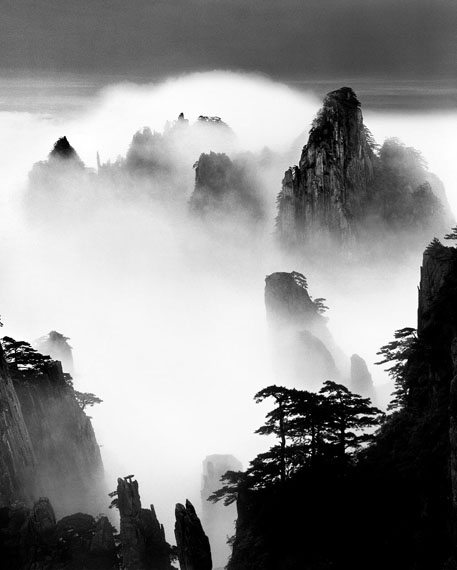
Mountains, in Chinese legends, are the pillars that hold up the sky. For ages, mountains have been seen as places nurturing life. Veneration for the vast beauty of mountains has taken many forms in Chinese culture, including retreat from society, art and ritualistic practices. This exhibition is divided into three sections with 63 photographs by 26 contemporary photographers presenting the geography, history, culture, life and art that is associated with or derived from mountains. Lofty Mountains: Revered in History will introduce the geography, history, legends and cultures associated with famous Chinese mountains; Pure Sound: Chinese Landscape Aesthetics in photography will explore the aesthetics of Chinese landscape painting through Wang Wusheng’s Mount Huang (Yellow Mountains) landscape photography; and New Landscape Photography will showcase the artists’ way of thinking in regards to Chinese history and current social affairs.
By investigating the impact of mountains on Chinese culture and traditional aesthetic, this exhibition examines the many ways in which nature has played and continues to play a defining role in Chinese geography, history, culture, and psyche.
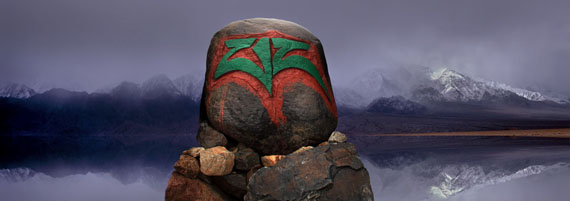
This exhibition presents 60 photographs by more than 20 Chinese contemporary artists, and is divided in to three parts:
Section I Lofty Mountains: Revered in History 高山仰止 introduces the geography, history, legends, and cultures associated with famous Chinese mountains
Section II Pure Sound: Mountains and Chinese Landscape Aesthetics 山水清音 examines Chinese landscape painting aesthetics and how they have influenced contemporary photography, through the work of renowned Chinese photographer Wang Wusheng 汪芜生
Section III New Landscape Photography 新山水摄影 showcases photographers using photography and post-photographic visual affects to express their thoughts on the role of mountains in society.
Featured artists include Wang Wusheng 汪芜生,Hou Heliang 候贺良,Taca Sui 塔可,Lu Hao 卢浩,Yao Lu 姚璐,Yan Changjiang 颜长江,and Xiao Xuan’an 肖萱安.
Art of the Mountain: Through the Chinese Photographer’s Lens will be available for travel starting Spring 2019.
Artist Statement:
“A small pine tree stands on the top of a peak, the shape of which resembles a Chinese writing brush. For this reason, this peak is named, “flower growing from a writing brush in a dream” (meng bi sheng hua). I have been to the observation deck to enjoy the view of this peak many times before and this unusual peak has become very familiar to me. This time, however, I was absolutely stunned! It had been raining heavily and the rain had just stopped. This peak, with its little pine tree on top, and all the surrounding peaks were suddenly bathed in clouds and mist, which seem to have emerged from nowhere. What a moment of wonder – a real dream of this writing brush and its flower!
This miraculous moment lingered for about ten minutes until all the peaks finally disappeared behind the thick mist. Since then I have continued to visit Yellow Mountain once or twice each year, and I never forgot to visit this same spot. However the same wonderful scene never reappeared in my presence and exists only as history. Luckily, that enchanting moment was captured by my camera lens and thus history can be revisited.”
--Zhang Jiaxuan
“At this moment, I’m at the top of “Beginning to Believe Peak.” After vising this peak, Xu Xiake, a famous traveler during the Ming Dynasty said, “I am beginning to believe that the Yellow Mountains are a wonder of the world.” That was how this peak got its name.
When I took the photograph, the previous day it had been snowing almost the whole day. However that morning it was clear and lots of clouds and mist were swirling around all the peaks as if those peaks were soaring in the air. Now, I can hardly imagine if there’s anyone who wouldn’t agree with Xu Xiake.”
--Zhang Jiaxuan
Born in Beijing, Zhang Jiaxuan came to the United States in 1981 to study cinema at New York University. After completing his master’s degree in cinema studies, he went on to teach Chinese language, Chinese calligraphy, Chinese film, Chinese drama and Chinese history at educational and cultural institutions across New York, including China Institute, Hunter College, New School University and Queens College. In addition to his experience as an educator, Zhang is an accomplished photographer, film critic and calligrapher. In 2009 he was recognized in the volume 100 NEW YORK PHOTOGRAPHERS, and will also be included in the upcoming 2015 volume 100 NEW YORK CALLIGRAPHERS.
Zhang Anlu was born in Shandong Province. An experienced photographer, he is a member of China Photographers Association, and is listed in “The Famous Figures of the Contemporary Arts Circles in China” and “Chinese Photographers Dictionary.” Many of his works have been awarded or featured in provincial, national and international photography exhibitions, beginning with his first joint black-and- white photography exhibition in 1986, and the first individual black-and-white photography exhibition in 2003. Since 1997, he has taught photography courses at School of Fine Arts of Nanjing Normal University, particularly black-and-white photography and the traditional gelatin silver printing process. Although digital photography has long eclipsed analog, Zhang continues to use the gelatin silver process to create his black-and white landscape photography, many of which feature western China as well as famous Chinese mountains and rivers.
Wang Wusheng was born in the Wuhu City Anhui Province in China. He graduated from the faculty of Physics at Anhui Normal University and worked as a photographer of The Anhui Newspaper and Pictorial in 1973. A year later, he began taking photos of Mt. Huangshan, or the Yellow Mountains. In 1981, he relocated to Tokyo, Japan and two years later, began studying at the Art Institution Nihon University in Tokyo where he was recognized as a fellow of the Japan Foundation of Japanese Art. In 1986, he studied at The Tokyo Arts University; and in 1989, he became a visiting researcher of the Institute for Comparative Studies of culture in Tokyo Women’s Christian University. Shortly after, he relocated to New York for a year and has since been working as a photo-artist based in Shanghai, Tokyo, and New York.
Gao Hui creates a series entitled “Among Mountains and Rivers” by using digital photomontage to combine two or more images he has taken, mostly in Western part of China. His landscape photos are panoramic, similar to the human vision. By so doing, the artist invites the viewers to immerse themselves in his works as if they were standing in front of the real scene so as to be transported to be among mountains and rivers. He won “The Best Photography Award” in 2014 Xishuangbanna Photo Festival in China.
Yao Lu is an emerging Chinese artist and teacher at the photography department of the Central Academy of Fine Arts in Beijing. His work has been shown in numerous festivals and collective exhibitions around China, including Lianzhou International Photo Festival in 2007, New China Occidentalism – China Contemporary Art in Beijing in 2006, and the Pingyao International Photography Festival in 2004.�
